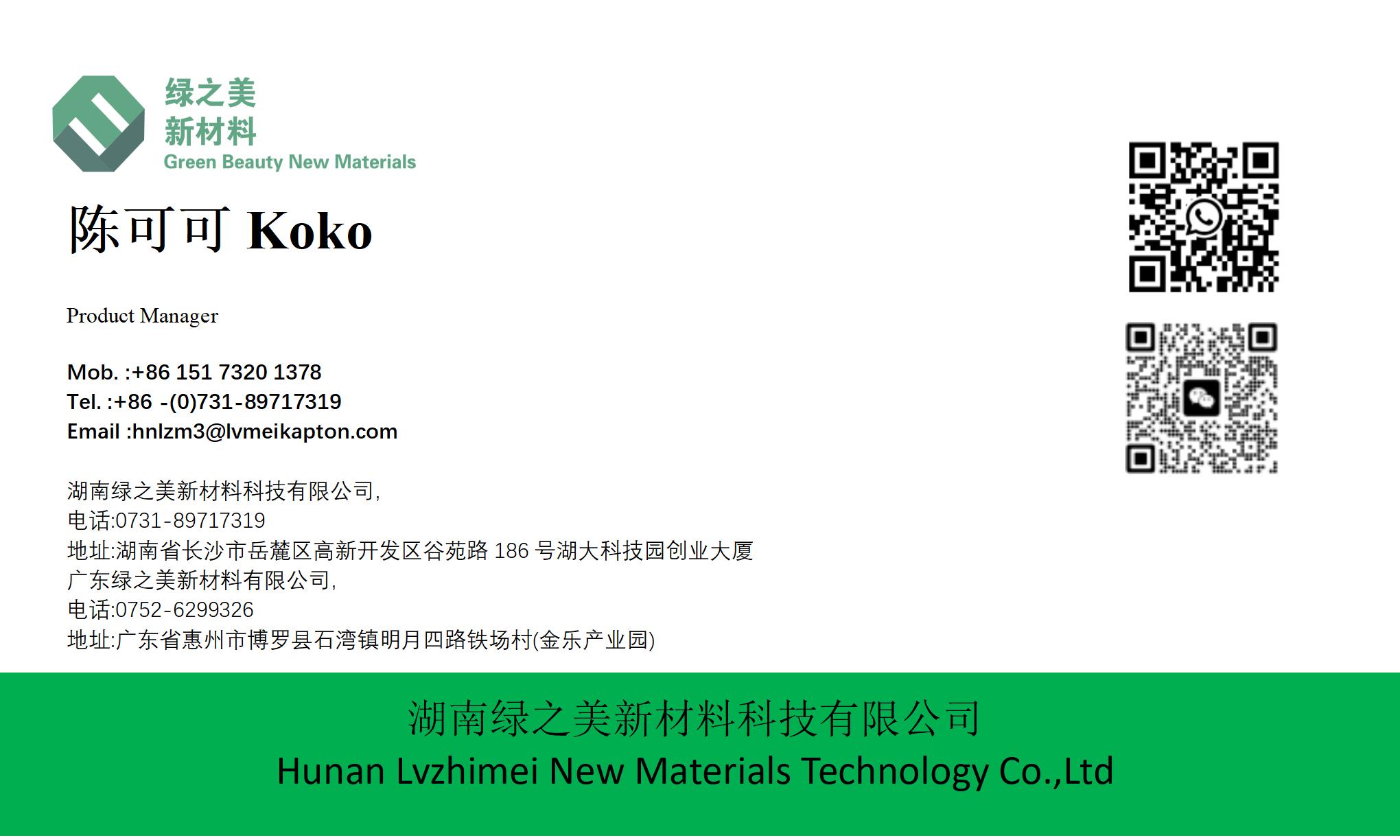hnlzm@lvmeikapton.com
+86 13787123465


Hunan Lvzhimei New Material Technology Co., Ltd.


NameDescriptionContent
How Does Gold Finger Electronics Polyimide Tape Kapton Prevent 5G Signal Loss? |https://www.lvmeikapton.com/
Source:
|
Author:Koko Chan
|
Published time: 2025-04-22
|
132 Views
|
Share:
The rapid adoption of 5G technology has revolutionized communication systems, enabling faster data rates and lower latencies. However, maintaining signal integrity at higher frequencies (e.g., mmWave bands) poses significant challenges. Signal loss due to material absorption, electromagnetic interference (EMI), and thermal degradation can degrade 5G performance. This article explores how Gold Finger Electronics Polyimide Tape Kapton addresses these issues, offering superior electrical insulation, thermal stability, and low signal attenuation.
How Does Gold Finger Electronics Polyimide Tape Kapton Prevent 5G Signal Loss?
IntroductionThe rapid adoption of 5G technology has revolutionized communication systems, enabling faster data rates and lower latencies. However, maintaining signal integrity at higher frequencies (e.g., mmWave bands) poses significant challenges. Signal loss due to material absorption, electromagnetic interference (EMI), and thermal degradation can degrade 5G performance. This article explores how Gold Finger Electronics Polyimide Tape Kapton addresses these issues, offering superior electrical insulation, thermal stability, and low signal attenuation.
5G Signal Loss MechanismsBefore discussing Kapton tape, it is essential to understand common causes of 5G signal loss:
1.
Dielectric Loss: Materials with high dielectric constants (Dk) and loss tangents (Df) absorb electromagnetic waves, increasing insertion loss.
2.
Thermal Degradation: Elevated temperatures during manufacturing (e.g., solder reflow) can degrade materials, causing signal distortions.
3.
EMI/RFI Shielding: Insufficient shielding allows external interference, compromising signal purity.
4.
Mechanical Stress: Repeated flexing or thermal cycling can lead to material cracking, detaching, or delamination.
Key Characteristics of Gold Finger Electronics Polyimide Tape KaptonKapton tape, also known as PI tape, is a high-performance material designed to mitigate these challenges. Its properties include:
1. Ultra-Low Dielectric Constants (Dk) and Loss Tangents (Df)Kapton exhibits exceptional electrical properties:
●
Dk: Typically 3.4 at 10 GHz (compared to PET’s 4.0–4.5)
●
Df: ≤0.003 at 10 GHz (PET’s Df ranges from 0.01 to 0.03)
These values minimize signal absorption, ensuring minimal insertion loss. For example, at 28 GHz, Kapton achieves 0.08 dB insertion loss, 300% better than Adhesive PET Material High Temperature Tape (Table 1).
Table 1: Comparative Dielectric Properties
Material | Dielectric Constant (Dk @ 10 GHz) | Loss Tangent (Df @ 10 GHz) | Insertion Loss @ 28 GHz (dB) |
Kapton Tape | 3.4 | ≤0.003 | 0.08 |
Adhesive PET Tape | 4.0–4.5 | 0.01–0.03 | 0.3–0.4 |
2. Superior Thermal StabilityKapton withstands extreme temperatures:
●
Continuous operation at 180°C
●
Short-term exposure to 400°C (e.g., solder reflow)
This thermal resilience prevents material degradation during high-temperature processes, ensuring long-term signal stability.
3. Exceptional Adhesion and DurabilityThe tape features strong adhesive systems (e.g., silicone or acrylic) that:
●
Provide robust bonding to various substrates (PCB, metals, ceramics)
●
Resist delamination under thermal cycling and mechanical stress
●
Maintain adhesion even after 400°C solder reflow, crucial for mmWave components.
4. EMI/RFI ShieldingKapton’s metallic variants (e.g., copper-clad PI tape) offer effective EMI shielding, reducing interference and maintaining signal purity.
Application: mmWave Antenna ProductionA case study involving mmWave antenna manufacturing demonstrates Kapton tape’s effectiveness:
Challenge: Fabricate antennas operating at 28 GHz with minimal signal loss and high reliability.Solution: Use LVMEIKAPTON Insulating Electrical Tape for the following critical steps:
1.
Protective Coating for Gold Fingers: Kapton’s low Dk/Df preserves signal integrity during assembly.
2.
Solder Masking: The tape withstands 400°C reflow, preventing solder bridging between conductive traces.
3.
EMI Shielding: Copper-clad Kapton tape shields sensitive components.
Result:
●
Insertion loss reduced by 30% compared to PET tape.
●
First-pass yield improved from 85% to 98%.
●
Reliability testing (500 thermal cycles) showed no delamination or degradation.
Performance Comparison: Kapton vs. Conventional MaterialsTable 2: Key Performance Metrics
Metric | Kapton Tape | Adhesive PET Tape |
Max Operating Temp. | 400°C (short-term), 180°C | 260°C (short-term), 130°C |
Adhesion Strength | 5–25 N/25 mm | 3–15 N/25 mm |
Solder Reflow Stability | Passes 3x 400°C reflow | Delaminates after 1 cycle |
Insertion Loss @ 28 GHz | 0.08 dB | 0.3–0.4 dB |
Why Kapton Outperforms PET Materials?
1.
Material Composition: Kapton’s polyimide film offers superior mechanical and thermal stability compared to PET’s polyester base.
2.
Adhesive Technology: Kapton’s silicone adhesive provides higher adhesion and better thermal resistance than PET’s acrylic systems.
3.
Dielectric Consistency: Kapton maintains stable Dk/Df across a wide frequency range, while PET’s properties degrade at higher frequencies.
Additional Benefits for 5G ApplicationsBeyond signal loss prevention, Kapton tape offers:
1.
Chemical Resistance: Protection against solvents, acids, and alkalis, ensuring component longevity.
2.
Low Outgassing: Minimal gas emission during vacuum processes, preventing contamination in sensitive environments.
3.
Flexibility: Thin profiles (0.05–0.18 mm) allow use in tight spaces without compromising signal integrity.
ConclusionGold Finger Electronics Polyimide Tape Kapton’s combination of low dielectric loss, thermal stability, and strong adhesion makes it a critical material for 5G applications. By minimizing signal attenuation, enhancing reliability, and withstanding extreme manufacturing conditions, Kapton tape enables the development of high-performance 5G components and systems. As 5G technology evolves, Kapton’s role in maintaining signal integrity will become increasingly vital.



Hunan Lvzhimei New Material Technology Co., Ltd.
Quick Links
Product Categories
© 2024 Hunan Lvzhimei New Material Technology Co., Ltd.All Rights Reserved. Designed by Erge
0731 - 89717319
hnlzm@lvmeikapton.com
+86 13787123465
Room 502, Chuangye Building, No186, Guyuan Road, High-Tech District, Changsha, Hunan, China
CONTACT



